By Ed Ting
Updated 12/5/10
1) Orion 8" f/4 Newtonian Astrograph
(8" f/4 reflector, OTA, rings, 8X50 finder, 2 speed Crayford focuser, $449 net + shipping)
Orion's 8" f/4 reflector promises to do double duty - it's both a wide-field medium aperture visual telescope and a fast f/4 imaging astrograph. It's attractively priced at only $449 and comes nicely appointed with a precision 2 speed focuser, mounting rings, and a cooling fan in the back. I've seen this scope at local star parties and have enjoyed looking through it. I managed to snare it away from its owner for a few weeks to put it through its paces. The 8" f/4 configuration has a long tradition among astrophotographers, especially the Japanese. Vixen made a similar looking R200SS model for years, and if you had the money, there was always a Takahashi Epsilon 200 waiting for you. Orion's model comes in well below the asking price of either and would seem to be a boon for budding imagers, or for observers who like to do wide field observing.
Orion's 8" f/4 Newtonian Astrograph on a CG5 mount
The scope is sold as an optical tube assembly only. I think it's assumed that anyone interested in this telescope will already have a mount in mind before buying it. Just beware, the scope is bigger and heavier than it looks in pictures. Orion lists the OTA weight at 16.5 lbs, but I weighed the complete OTA with rings, dovetail plate, finder, and extension tube at 20.3 lbs on my digital scale. In any case, its weight will overpower CG4/Astroview class mounts. I happened to have a Celestron CG5 (same as the Orion Sky View Pro) handy but even it required two counterweights to balance out the tube. The CG5 weighed in at 52 lbs. So, in total, you are looking at a 70+ lb rig.
If weight is an issue and you're trying to decide between Orion's 6" f/5 and 8" f/4 astrographs, keep in mind that the 6" is going to be a lot more manageable. Not only is the tube lighter (claimed 10 lbs vs. 16.5 lbs) it only needs one counterweight, and you might be able to get away with a smaller mount entirely - something in the Sky View Deluxe or Great Polaris category might work. A similarly equipped 6" f/5 assembly could be as much as 20 lbs less.
Having said all that, as the weeks went on, I did more proficient at picking the whole thing up. I didn't come close to any disastrous mishaps, but I did find myself taking a deep breath before moving the rig.
Close up of the focuser
Set up as seen here, the entire assembly will set you back about $850. I'd consider this a minimum to get started. Add in a Paracorr, polar alignment scope, Goto on the mount and other accessories, and you could easily double that amount (there are no eyepieces included in the price.) I set the scope up and went observing over several weeks in November and December of 2010. This turned out to be unusually cold and windy for this time of the year.
There are few things that stand out right away as you use the scope visually. First, the CG5 is more than enough to hold the short tube, even in windy conditions. I get a little suspicious whenever small to medium sized mounts need two counterweights, but I didn't have to worry here. Secondly, although the tube is quite small (only 28" long) and balances just fine along the right ascension axis with the two counterweights, it is a little unbalanced along the declination axis. I mentioned this and the owner of the scope says that sometimes he attaches magnetic weights on the back of the tube opposite the side of the focuser. This solves the problem but it's a little inelegant, and adds even more weight to the rig - the last thing you need. Third, the rings are really tight. You cannot rotate the tube in the rings unless you undo the latches. Anyone who uses an equatorially-mounted Newtonian will tell you that you wind up doing this a lot, especially as you swing the scope from one side of the sky to the other. As the nights got longer, I caught myself not viewing certain objects if they weren't in the "right" part of the sky.
The scope comes with a two speed Crayford focuser. And what a focuser it is! The hardware is extremely well-made, and it's got lots of dials, screws, knobs, adapters, and an 35 mm long 2" extension tube. I'm pleasantly surprised to see it on such an inexpensive scope. I can picture people buying the OTA just to get the focuser - it's that good. The focuser does seem to be optimized for photography though, as you need lots of out-focus travel to come to focus with most eyepieces. If you're using eyepieces that take a lot of back-focus to begin with (like most of the TeleVues) you cannot reach focus unless you use the 35 mm extension tube (shown above.) Even then, the focuser wound up getting racked all the way out (and I mean ALL the way out, right to the stop) to reach focus with most of my Panoptics. Check out the photo above; that's the actual focus position of the 22 mm Panoptic. It's almost freakishly high off the tube.
Finally, the collimation screws work OK, but the mirror cell isn't the greatest of designs. If you back off too much on one screw (or a small amount on two screws) the mirror has a tendency to shift, causing you to start all over again. The solution: as soon as you loosen one screw, be sure and cinch up the remaining ones to keep pressure on the mirror.
Close up on the collimation screws and the fan assembly
I like my observing experiences to be "transparent." Once the observing starts, I don't want to think about the equipment. The telescope should be an extension of your mind and body. Obviously, Goto systems usually succeed in this regard, as do most nice Dobs - grab the tube and point. The Orion didn't quite pass with flying colors here, as I had to keep thinking about its mechanical issues. Long term, the tight rings bothered me more than anything else.
So enough about the mechanical aspects, how did the 8" f/4 perform optically? No one expects optical perfection from an inexpensive f/4 reflector, and you don't get it here. The star test showed moderate spherical aberration (overcorrection.) The secondary obstruction is rather large at around 35%. At low power, even Naglers and Panoptics couldn't quite correct the coma at the edges of the field of view. Don't use cheap low power eyepieces with this scope! However, once you get the power up over 60X or so (with a 13 mm Type 6 Nagler in my case) the distortion at the edges goes away and you can enjoy the view. You're naturally going to seek out large deep sky objects with a scope like this, and I immediately went for M31, the Double Cluster, M33, and the Pleiades. The scope did not disappoint. Many amateur astronomers are used to seeing wide fields or bright images, but it's that that often that you see wide fields and bright images. As long as you don't look too hard at the edges, you can convince yourself that you've got a really, really bright Pronto. This can get addicting.
The scope was acceptable on double stars. Albireo was nice, as was gamma Aries. Eta Cass showed its deep red component, but the split wasn't totally clean. On Jupiter, the views started to break down around 125X - not a great sign. I figured the conditions weren't good that night, but a nearby C102F fluorite refractor showed us otherwise, providing crisp separation on the doubles and clean detail on Jupiter.
Looking down the tube
I should mention the finder, which was a nice surprise. I've gotten used to throwaway finders on cheap scopes, but the 8X50 unit on the scope was really nice. The crosshairs are just wide enough to be useful without intruding on the views, and optically it was sharp to the edge. Under magnitude 4.5 skies, I had no trouble seeing the Dumbbell, M31, NGC 457, and even M15 in it.
Visual observing is only half the of the utility with this scope. I'm not an expert astrophotographer, but I did manage to take some quick shots through the Orion. Here, the telescope was clearly more in its element. I learned to appreciate the focuser, which is an unusually nice unit given the scope's price. Its long focus travel accommodated everything I threw at it. For prime focus, you remove the 2" extension tube. While using my Celestron NexImage webcam, the extension tube goes back in. If I was using a barlow, the same tube either goes in, or stays out, depending on what kind I was using. The Crayford mechanism is very smooth and the tension is adjustable. The barrel is marked so you can quickly dial in common focus positions, a real time saver. The focuser, coupled with the tack-sharp finder, made life easy when taking images.
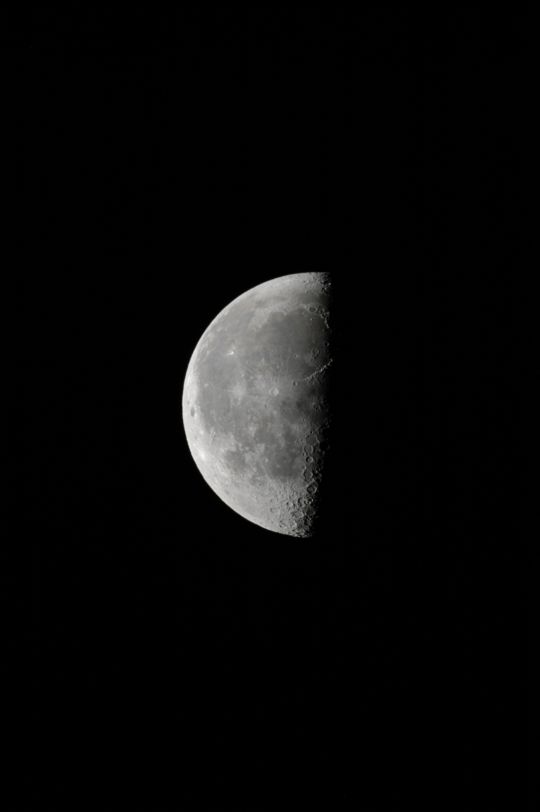
Last quarter moon, Nov 28th, 5:15 AM, Nikon D100 @ prime focus, 1/640 sec @ f/4
Prime focus photography is easy - just stick your DSLR into the focuser and fire away. I took quite a few shots of the moon and Venus early one morning.
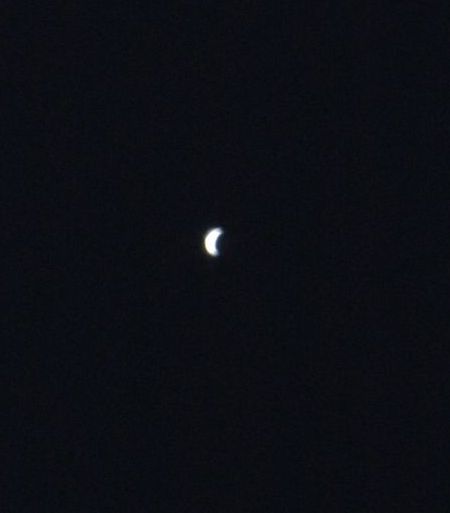
Venus @ prime focus
Using a cheap Celestron NexImage (a slightly modified 640 X 480 Philips webcam) I was able to take some images of Jupiter.
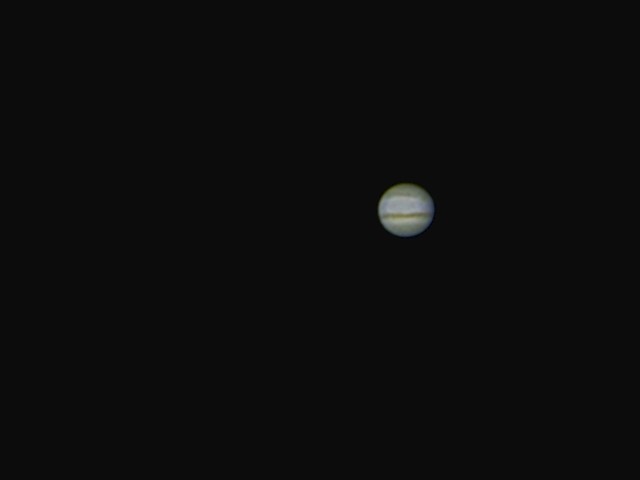
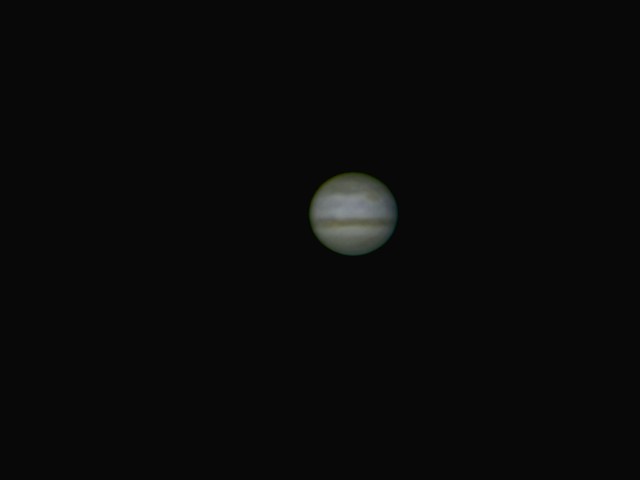

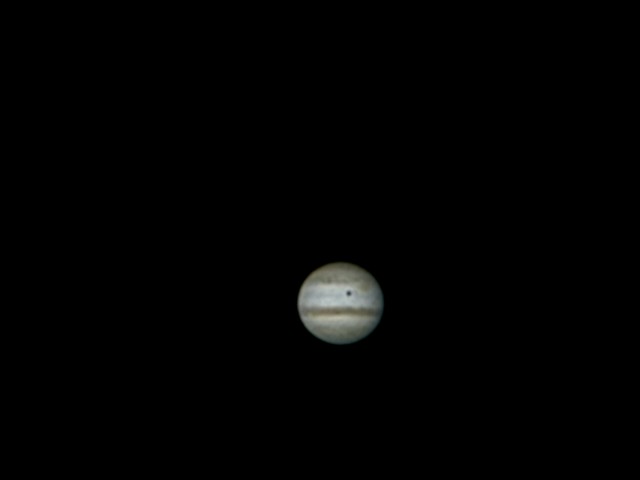
Jupiter with NexImage camera, 1.8X (T) and 3X (B) barlows @ prime focus
I didn't have the conditions or the equipment to try any deep sky photography, but owners of this scope have told me it is OK for long exposure imaging. All of them, however, have told me that the Paracorr is mandatory.
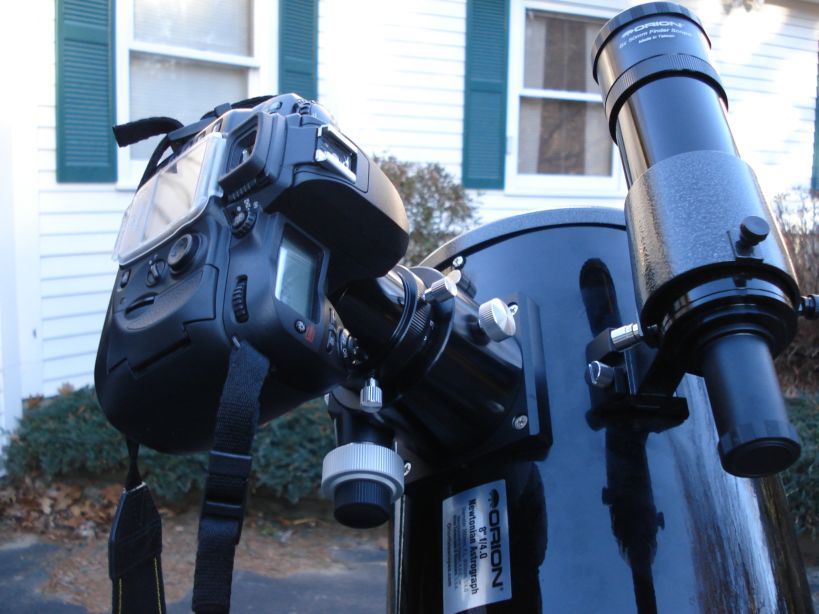
Nikon D100 camera body at prime focus. Note focuser position (racked in) and lack of extension tube.
Celestron NexImage webcam in focuser. Note use of 35 mm extension tube and 2" - 1.25" adapter..
The Astrograph rig set up for imaging.
I enjoyed my time with the Orion 8" f/4 OTA. I did feel that it was more suited for imaging and that its visual utility was just a nice bonus thrown in. We had a stretch of fine, clear weather at the end of November and the telescope kept me up, both at night and early in the morning (there's nothing quite like getting up at 4 AM in 18 degree weather!) for close to a week. I had to catch up on some sleep before I could muster the energy to write this review. Hey, if that's not an endorsement, what is?
Orion 8" f/4 Newtonian Astrograph Hots
Focuser to die for
Jack of all trades, leans towards imaging
Good quality finder
Attractive price
Orion 8" f/4 Newtonian Astrograph Nots
For visual observers, the scope leans towards imaging
Minor mechanical issues detract from seamless observing experience
Critical observers may not appreciate so-so optics, needs a Paracorr for optimal performance
Verdict
A great deal for budget-minded imagers who dabble in visual observing.

Close up on the moon, NexImage/AmCap/Registax
End Telescope Reviews, Page 27